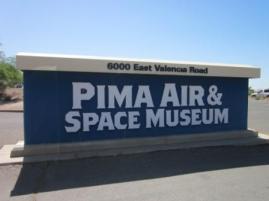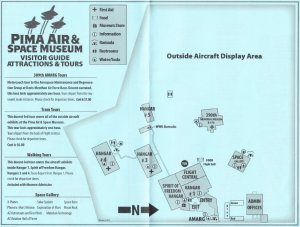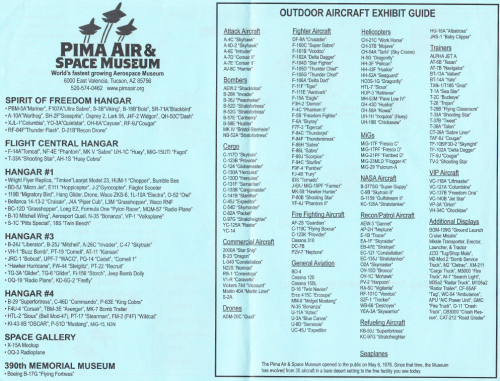Two weeks ago, Albert, a work colleague, and I took one of the aeroclub’s DR-400 airplanes to make a flight excursion from Toulouse to Northampton Sywell, Old Warden and Duxford (England) as part of a “Fly out” organised by the Aviation Society of the Airbus Staff Council, in which 6 aircraft would make the trip.
The main purpose of the flight was twofold:
- Visit the Shuttleworth collection and their evening flight display on Saturday 14th July.
- Visit the Flying Legends airshow at Duxford, hosted at the Imperial War Museum, on Sunday 15th July.

Mont Saint Michel.
During the trip we were to make 6 flights: Toulouse Lasbordes (LFCL) – Cherbourg (LFRC), Cherbourg – Sywell (EGBK), Sywell – Old Warden (EGTH), Old Warden – Fowlmere (EGMA), Fowlmere – Laval (LFOV), Laval – Toulouse Lasbordes. In all about 14 hours of flight time, which we split among the two of us, together with sharing the navigation and radio communications workload.

We prepared the flights using Mach 7 online tool, with which we generated the flight logs and routes for GPS, which could only be charged onto Albert’s smartphone, I replicated them in my Air Navigator app on my phone as well, however we did most of the navigation by way of following the paper charts.

Having to fly most of France from South to North, we decided to overfly some castles of the Loire Valley (Chenonceau, Cheverny and Chambord), the racing circuit of Le Mans and Omaha beach in Normandy (which we couldn’t see well due to the presence of clouds at the time we passed). See below some of the pictures we took of those places (with the smartphone, no pro cameras on board).

Château de Chenonceau.

Château de Cheverny.

Château de Chambord.

Racing circuit of Le Mans.
We then made a stop, refuelled the airplane, ate some energy bars and departed for England. The weather seemed uncertain and there were several air traffic restrictions due to the Royal International Air Tattoo going on at Fairford, preparations for Farnborough air show, and the visit of Donald Trump, staying at Buckinghamshire. However, our colleague found a corridor through which we could fly smoothly past 15 h local time. We over flew the English Channel (La Manche) and approached the islands by first flying over the Isle of Wight (where I stayed one month during the summer of 1999 working at Camp Beaumont in Bembridge, at the eastern corner of the island, pictured below), the Hayling island leaving Portsmouth to our left, then up North by way of Winchester, Reading, Oxford and then Northampton. But as you can imagine, as there are not sign posts in the sky we were flying following the instruments and different navigation references close to those places. We took the opportunity to over fly Silverstone racing circuit.

Isle of Wight.

Silverstone racing circuit.
We then landed at Sywell, where we stayed for a night at the Aviators hotel, by the aerodrome, an ideal place to make an overnight stop.
The following morning we made a short flight to Old Warden, a small grass aerodrome where the Shuttleworth collection is based.
I found about the Shuttleworth collection some years ago in Twitter and started following their account (@Shuttleworth_OW). They happen to have arguably the largest collection of flying aircraft from the 1910s and 1920s. They do have the oldest flying machine in airworthy condition, a Bleriot XI from 1909. Rather than introducing the collection with a few paragraphs, I share here this video from their site:
For me, visiting the collection was a dream come true, moreover on a day in which they would fly most of their airplanes. See below a few pictures.

1909 Bleriot XI. The original oldest airplane in airworthy condition.

1920s biplanes (DX60X Moth, Southern Martlet).

Bristol Boxkite 1910 replica flying.

Avro Triplane 1910 replica.
I wanted to share a short video I took of the Bristol Boxkite 1910 replica flying just after taking off (a replica built in 1965). It took its time to gain some altitude, always at quite low speeds. It never went much higher than 50 ft. It was wonderful to see it flying.
We stayed the night over at the camping by the aerodrome and in the morning we departed for Fowlmere, another grass aerodrome a few miles from Duxford. The taxiway at Fowlmere was fully packed of small airplanes (including the Antonov An-2 coming from Germany that you can see below) and tents of pilots that had been camping the previous night or would camp the following one, as we did.
We got a faboulous breakfast at the airfield and then drove to Duxford to attend the Flying Legends air show and visit the Imperial War Museum.
 Our Fly out was organised by a fellow British colleague, Derek. He recalled how being brought to Flying Legends as a child by his father had been a marking moment. He only came again decades later. The air show is one of the biggest and best classic aviation events in the world. If you have the chance to visit it once, do not hesitate, go.
Our Fly out was organised by a fellow British colleague, Derek. He recalled how being brought to Flying Legends as a child by his father had been a marking moment. He only came again decades later. The air show is one of the biggest and best classic aviation events in the world. If you have the chance to visit it once, do not hesitate, go.
This year the show commemorated the 100th anniversary of the Royal Air Force and the 50th anniversary of the filming of “Battle of Britain“ which had Duxford as one of the locations and some of those very airplanes as main characters of the movie. Other locations of the filming were the Tablada airfield in Seville (where Airbus Defence has facilities), the coast in Huelva passed as Dunkirk or San Sebastian as if it was Berlin.
There are plenty of aircraft to see up close, from the flight line, many exhibitors come with books, models, clothing, memorabilia, etc., you’ve got the museum in itself (!) to visit, you have literally dozens of WWII birds flying, among them: Supermarine Spitfire (we saw a formation of 11 of them flying), Hawker Hurricane, North American P-51 Mustang and resident Boeing B-17 Flying Fortress Sally B (only B-17 in flight in Europe)… By the end of the day you will be more than overwhelmed, exhausted, but with that smile of wonder when watching those jewels fly up in the air while you hear the engines roaring, the music and the explanations from the commentator of the show.

Boeing B-17 Flying Fortress Sally B.

Boeing B-17 Flying Fortress Sally B.
See this short video of the Balbo formation flight at the end of the display with 25 single engine WWII birds flying…
After the show we headed back to Fowlmere where we had dinner with three other colleagues (French and German) before walking to the airfield to camp by our airplane, which felt as the aviation of the beginning of the XX century.


Monday 16th July, feeling exhausted and overwhelmed, was the day to come back to Toulouse. The weather seemed good in England and to cross the channel but not so in France, so we took it with calm. We flew through the East of London, crossed the channel and then overflew all the coast of Normandy down to Omaha beach, then we headed South West to the Mont Saint Michel and then to the airport of Laval. There we rested for a couple of hours, ate more energy bars, studied the meteorological conditions to go further South and finally departed back to Toulouse Lasbordes.

London skyline.

Queen Elizabeth II bridge and Littlebrook Power Station.

Thames river estuary.

Cliffs of Étretat, Normandy (France).

Le Havre. Pont de Normandie.

Oil tanker ships departing from Le Havre.

Sword beach (British). Normandy Landing.

Remainings of Arromanches mulberry bridge.

American cemetery at Omaha beach.

Omaha beach.

Mont Saint Michel.
Main takeaways and afterthoughts:
- The airshows and visits were totally worth it. Dreams come true.
- Over flying those castles, circuits, beaches, historical landscapes… you can imagine, breathtaking.
- Radio communications: much easier than expected, in England as well (even if the there were lots of radio frequency changes to be made around London). French in France, English in England.
- We made ourselves follow in each air space. It forces you to interact more with the control but it adds to the safety of flight (traffic information overflying Saint Michel or the castles is advice-able).
- Flight plans: in France they are not required for the long flights we did South-North flying spaces E and G. But we filed them. It allows the control to better follow you. They know your plans, they give clearances for D spaces without hesitation.
- All the terrains we visited in England required PPRs (a colleague took care of this).
- To fly into England a GAR report must be submitted in advance.
- We didn’t touch a single sterling pound in the four days, credit cards almost did the trick for everything. A colleague had to pay for a taxi and a meal. We could have avoided that by selecting alternatives which accepted credit card payment.
- We had to divert due to the meteorological conditions when arriving to one of the destinations. Clouds and fog were closing our visibility. We found ourselves with no more than 3-4 km of visibility and flying very low, so we turned back. The two diversion aerodromes we had initially selected would not do the trick (in the middle of the cloud region). We had to look for a third one in flight. That was stressful. Luckily we were two pilots on board: one keeping the airplane on air, the other navigating, looking for a suitable aerodrome and downloading the aerodrome chart (we carried about 30 on board, but not the one we finally needed). Lessons learnt: never spare charts, you may need them; ensure you’ve got batteries and chargers on board (you may need them in the worst situation), if you are the only pilot on board, but have passengers with you, try to get one of them briefed in advance of what can he or she do if something happens.
After this excursion I have completed just above 120 flight hours, and I am quite happy with the flight training provided by the aeroclub and system in France. Before the excursion we had some uncertainties about some aspects of the flight. In the end all of it was much easier than expected.



















